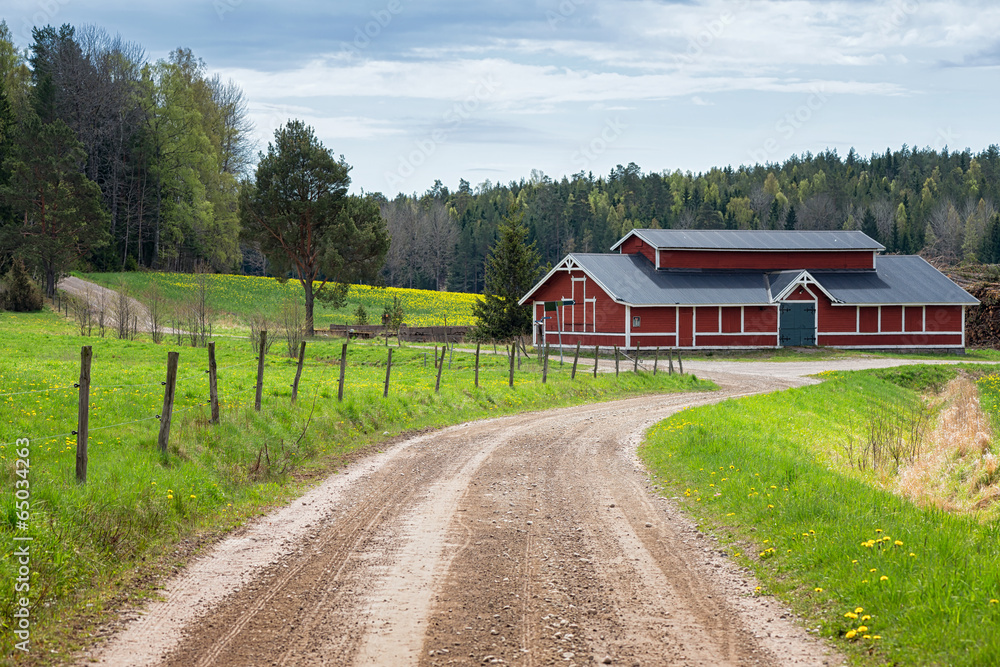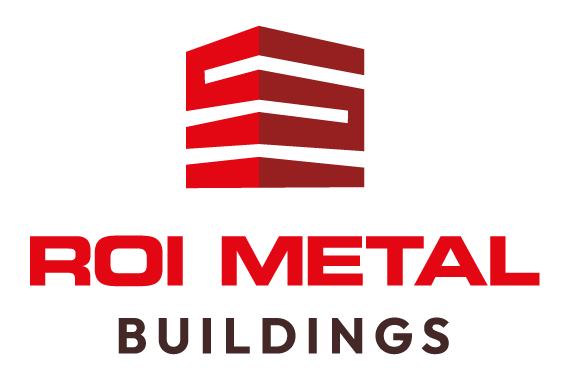Navigating the maze of tax laws can be daunting, especially when it comes to writing off a barn. You want to ensure you’re taking full advantage of every deduction available but might worry about making costly mistakes. Rest assured, you’re not alone in this fray—many farmers are in your shoes, anxious yet hopeful about optimizing their tax liabilities. With this in mind, we chose to explain how to write off a barn on taxes.
Understanding the intricate IRS guidelines is vital. It’s not just about owning a barn; it’s about using it primarily for agricultural activities like storing your equipment or housing your livestock. Detailed records and compliance with specific criteria will make all the difference. Let’s dive into these aspects so you can confidently manage your barn’s expenses and maximize your deductions.
This article follows up our article from last week answer the question, “Can a barn be a tax write-off?“. After answering this question with, “Yes, of course”. We decided to write the follow up article which would explain exactly How to write off a barn on taxes. Our next few articles will continue to help our customers maximize their tax benefits before the end of the year. If you’ve followed our articles in the past, you’ll remember that we aim to be thorough with our content and to provide as much value as possible.
To write off a barn on your taxes, it must be purpose-built for agricultural use and primarily used for business activities. You can claim depreciation on the costs over several years; typically, you would use Form 4562 to report the depreciation annually during this period, ensuring you maintain thorough records of expenses and business income to substantiate your claims.

IRS Guidelines for Barn Deductions
According to IRS Publication 225, or what many refer to as the Farmer’s Tax Guide, there are some clear eligibility requirements when it comes to deducting barn-related expenses. A barn must primarily serve agricultural business purposes to qualify for these deductions. This means that if your barn is used for activities like storing farming equipment, housing livestock, or conducting other farm-related operations, you stand a much better chance of claiming those expenses.
For example, if a barn splits its usage with 60% going toward personal endeavors and only 40% for business purposes, it won’t qualify for those crucial deductions. Therefore, it’s vital to keep records that accurately reflect how the barn is used, ensuring you’re well within the qualifying guidelines.
Depreciation and Bonus Depreciation
When eligible, one of the key aspects of writing off barn expenses involves depreciation. Typically, barns can be depreciated over a period of 20 years, enabling farmers to spread out their deductions over time. However, it doesn’t stop there—legislation such as the Tax Cuts and Jobs Act introduced first-year bonus depreciation that is especially beneficial in maximizing your initial write-off.
If your barn was placed into service on or before January 1, 2023, you could potentially write off 100% of the cost in that first year. After this date, however, things change; the bonus depreciation decreases incrementally each subsequent year—80% in 2023, 60% in 2024, and so forth. This decline highlights the importance of timing when planning any capital expenditures related to your barn.
It’s advisable to frequently consult both IRS updates and a tax professional who specializes in agricultural tax issues. With laws continually changing and various factors influencing potential deductions, staying informed will ensure compliance while maximizing your benefits.
Keeping organized records of usage percentages along with documenting expenses incurred is a game-changer for farmers looking to take advantage of these guidelines. As you navigate through the intricacies of barn deductions, accountability becomes key—not just for maximizing your tax returns but also for safeguarding yourself during audits or when preparing tax filings.
As we turn our attention now to specific categories of expenses that can be claimed related to barns, identifying what qualifies can further enhance your financial strategy.
Eligible Barn Expenses
Identifying tax-deductible expenses is crucial if you want to make the most of your barn-related investments. To start, it’s essential to differentiate between direct and indirect costs, as each plays a key role in shaping your tax deductions.
Direct and Indirect Costs
Direct costs pertain explicitly to the construction, repair, and maintenance of the barn itself. These include any expenditures that are essential to keeping the barn structurally sound and operational. Examples would be materials—think wood, metal, or concrete—and labor costs, such as hiring contractors or builders for renovation projects.
It’s important to recognize these elements when planning your budget or preparing for tax season, as they present clear opportunities for writing off expenses. For instance, if you’re installing a new roof, painting the sides, or performing electrical work, those expenses directly connect to the barn’s upkeep. Each of these expenditures contributes not just to aesthetics but also to ensuring that the space remains functional.
- Construction materials (wood, metal, concrete)
- Labor costs (contractors, builders)
- Maintenance costs (painting, roofing)
- Utility costs (electricity, water)
However, it doesn’t end there; indirect costs also form an integral part of what may be deductible.
Indirect costs may cover broader aspects related to maintaining your property. These could entail expenses related to the land where the barn sits or interest accrued from loans taken out specifically for construction purposes. Unexpected events like severe weather often lead homeowners to seek funding for repairs or upgrades—it’s these kinds of situations that can create significant indirect costs worth noting.
Keeping detailed records is paramount when it comes to claiming these expenses on your tax return. Substantial proof of both direct and indirect expenditures will provide a strong case for your deductions while avoiding potential questions from the IRS.
By diligently tracking all costs associated with your barn, you’ll not only optimize your tax standing but also gain better insights into your investments moving forward.
As we transition to discuss how certain assets within your barn can depreciate over time, understanding these financial nuances will further empower your decision-making.
Depreciation of Barn Assets
Depreciation is a key financial tool that allows you to recoup a portion of your investment in a barn over time. By distributing the cost of the barn against your income, you lessen the financial burden and reduce your taxable profit. The IRS provides specific guidelines on how depreciation works, which can significantly impact your farming operations’ bottom line. Essentially, it allows you to reflect the wear and tear of the barn as it ages, ultimately giving you financial relief over its useful life.
Depreciation Schedule
Most barns follow a standard depreciation schedule set at 20 years using the Modified Accelerated Cost Recovery System (MACRS). This method allows for accelerated depreciation, meaning you might be able to write off a larger portion of the asset’s value in earlier years. For special-use barns—such as those tailored for unique agricultural activities—the lifespan can be reduced to just 10 years.
Imagine if you’ve invested $100,000 into constructing or improving your barn. Using MACRS, you would have an annual deduction of about $5,000. This initial cost recovery is valuable not only for current cash flow but also for long-term financial planning.
It’s crucial to keep a detailed record of these expenses over time, as proper documentation can help substantiate claims during an audit.
However, staying informed about bonus depreciation further enhances these benefits.
Bonus Depreciation
Bonus depreciation offers an exciting opportunity to accelerate your tax deductions even more. Under current tax laws, First-Year Bonus Depreciation allows you to deduct a substantial portion of the asset’s cost right off the bat. For instance, consider that 80% of your barn’s purchase price could potentially be deducted in the year it’s placed into service. This option can provide significant upfront savings, making it an appealing choice when planning capital expenditures.
Note: Always confirm bonus depreciation rates as they are subject to change yearly and may vary based on legislative adjustments.
Understanding both depreciation and bonus depreciation empowers you to make informed decisions, maximizing your potential deductions while ensuring compliance with IRS regulations. As we shift gears from these methods, let’s now explore how to accurately track your costs related to barn ownership.
Documenting Your Barn Costs

Proper documentation is not just a good practice; it’s critical for substantiating your deductions when it comes time to file your taxes. The IRS has specific requirements, and being prepared with the right paperwork can save you from headaches down the road. When you’re documenting your barn costs, imagine it as creating an evidence trail—one that leads straight to your potential savings.
Types of Documentation Required
Essential documents play a pivotal role in supporting your claims. This means gathering all invoices for materials such as timber and equipment, labor payment records, and receipts for maintenance costs including repairs or upgrades. Furthermore, utility bills help illustrate ongoing operational expenses connected to running your barn. If you’ve taken out loans for construction or improvement, ensure you retain those loan documents as well as relevant bank statements that detail those transactions. Maintaining these documents isn’t just a guideline; it’s necessary for smooth sailing during tax season.
- Invoices and receipts
- Utility bills
- Loan agreements
- Bank statements
Once you’ve compiled these vital documents, the next step is organizing them smartly.
Organizational Systems
Using physical folders or adopting digital tools like spreadsheets and accounting software can significantly streamline this process. Imagine flipping through a neatly labeled folder when you need a specific receipt rather than rummaging through a heap of papers—it makes all the difference. Scanning physical documents into digital formats not only provides easy access but also serves as a backup in case something gets lost or damaged. Think of your documentation system as a fortress protecting your hard-earned deductions from falling prey to chaos.
With everything organized and documented, you’re now set to tackle the intricate world of tax filing with confidence and efficiency. Understanding how to navigate this process can provide numerous benefits in maximizing your deductions.
Filing Your Tax Return
The process of filing your tax return can feel overwhelming, but breaking it down into manageable parts can alleviate that stress. First things first, you’ll want to have all your documentation in front of you, including receipts, invoices, and any prior year returns if available. Organizing these documents not only aids in accuracy but also prepares you for possible audits.
Forms and Schedules
Using the correct forms is crucial when you file. Specifically, you’ll rely on Form 4562 to report any barn depreciation and Schedule F (Form 1040) for detailing farm income and expenses. These forms consolidate your permissible deductions into your annual tax filing, allowing you to represent the financial reality of your farming operations clearly.
| Form | Purpose |
|---|---|
| Form 4562 | Depreciation Reporting |
| Schedule F | Farm Income and Expense Report |
Completing these forms accurately is essential, as mistakes can lead to underreporting or overreporting income, which can result in costly penalties or missed deductions.
Professional Assistance
While many people choose to navigate tax preparation on their own, consider consulting a tax professional who specializes in agricultural regulations. A knowledgeable accountant can save you time and ensure you’re maximizing every available deduction related to your barn and farming activities. They stay current with any changes in tax laws that may affect your filings.
Working with a professional means they can guide you through the nuances of agricultural deductions such as the “Beginning Farmer Tax Credit” if applicable in your state or specific exemptions like property tax relief for agricultural assets. This level of expertise often proves invaluable when managing something as complicated as agricultural taxes.
As you prepare your return with diligence and organization, you’ll be setting yourself up for success when ensuring compliance and claiming all eligible deductions related to your barn. This attention to detail becomes particularly important when navigating common pitfalls that many taxpayers encounter during this process.
Avoiding Common Filing Mistakes
Even minor errors can lead to significant issues, including audits or penalties that may complicate your life. Understanding common mistakes in filing is the first step toward preventing them. One prevalent issue is misclassifying expenses, which can arise when farm owners inadvertently categorize personal expenses as business-related. This misstep not only skews financial records but also raises red flags for the IRS.
Another frequent error involves the failure to record all eligible deductions. Many farmers overlook opportunities to write off certain expenditures, which can reduce their taxable income significantly. For instance, if you invest in equipment or supplies specifically for barn maintenance and fail to document that expense correctly, you lose out on those valuable deductions.
- Overlooking state-specific filing requirements: Each state has unique rules regarding tax filings. Ignoring these can result in unnecessary fines or complications with local taxes.
- Inaccurate or incomplete documentation: When filing taxes, supporting documents like receipts and invoices are essential. Incomplete records create gaps in reporting, which may trigger an audit.
So how do you ensure accuracy while navigating these complexities?
Tips for Avoiding Errors
The most effective approach is to double-check figures and utilize tax software designed to catch common errors automatically. Tax software often prompts you for necessary information that you might overlook when preparing manually, providing invaluable assistance during this complex process. Additionally, consulting with professionals experienced in agricultural tax returns can help clarify any uncertainties regarding deductions and classifications.
Maintaining a meticulous record throughout the year can drastically reduce errors during tax season. Consider setting up a digital folder where you store scanned copies of receipts and financial statements, ensuring that everything is organized and easily accessible come filing time.
Understanding these filing nuances can set the stage for broader concerns that require attention and compliance with regulations.
Legal Compliance and Considerations
Compliance with laws and regulations is crucial to avoid legal issues and fines. Neglecting this aspect can lead to costly penalties, which underlines the importance of being proactive rather than reactive in your financial management. Farmers must navigate a complex web of federal and state regulations that govern the tax treatment of agricultural assets. This journey can feel daunting, but with a clear understanding, it becomes manageable.
Federal and State Regulations
Federal laws dictate the tax treatment of agricultural assets, including barns, but state laws can vary significantly. This means what applies in one state may not apply in another. As such, it’s essential to familiarize yourself with both sets of regulations to ensure full compliance.
For example, some states might offer additional deductions or credits for farming structures that are not available at the federal level. Be equipped with detailed knowledge by keeping local tax codes within reach and consulting resources such as the USDA or your state’s department of agriculture.
Keeping up with Changes
Tax regulations can change quite frequently; therefore, staying updated on both federal and state tax laws is essential. Subscribing to IRS newsletters or following agricultural tax blogs can help you keep your ear to the ground for any updates that may affect your barn write-off strategy.
Moreover, regular consultations with legal advisors or accountants who specialize in agricultural law will provide insights tailored to your specific situation.
For instance, recent shifts in legislation—like changes to bonus depreciation rules enacted in 2022—have significant implications for many farmers’ filing strategies. Historically, farmers could benefit from immediate expensing of certain investments through bonus depreciation. However, changes enacted recently altered eligibility requirements and phased out benefits over time. By being aware of these modifications ahead of time, you can make more informed decisions concerning property improvements or new construction, ultimately placing you at a significant advantage during tax season.
Ultimately, a diligent approach toward legal compliance not only shields you from potential pitfalls but also empowers you with the knowledge needed to maximize your deductions effectively.
To maximize your barn write-offs and understand all nuances involved in the process, consider consulting with experts who specialize in agricultural taxation. For personalized assistance, visit us at Roi Metal Buildings or call us at 865-316-9009 today!
Summary: How To Write Off A Barn on Taxes?
Knowing where to look for information is just part of the equation; you must also be vigilant about ongoing changes to these regulations. Although we are not tax experts and this article should not constitute any legal or tax advice, we do specialize in metal building sales and talk with several customers a week about how to write off a barn on taxes. Consider discussing this article with your tax professional or have them get in touch by contacting us or give us a call at 865-316-9009 for personalized assistance today! Also, if you like our content and want to stay up to date, follow us on Facebook at https://www.facebook.com/roimetalbuildings!



